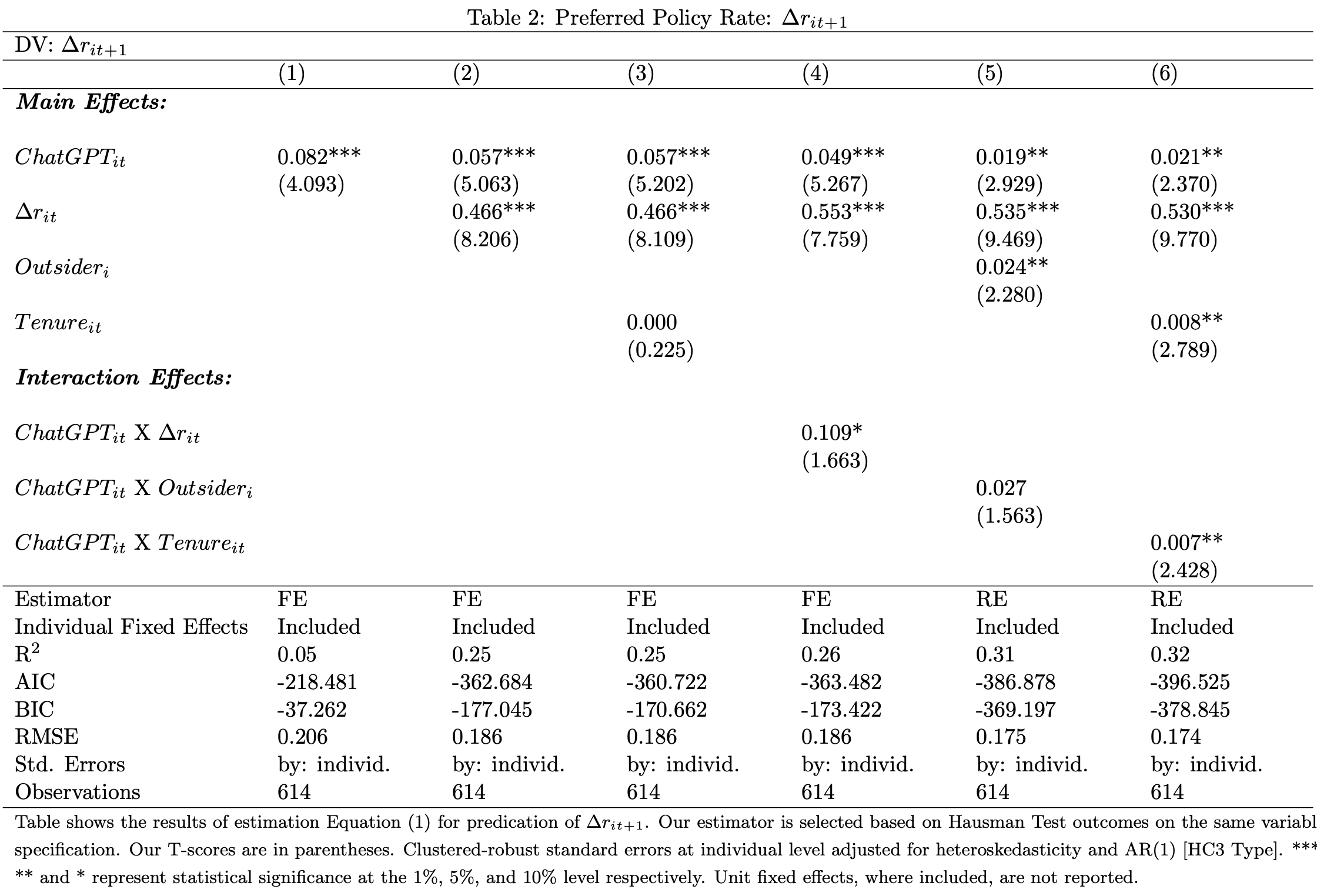Takeaway:
ChatGPT’s classification of central bank speeches (dovish, neutral, hawkish) significantly predicts the speaker’s future policy vote. LLMs can forecast real-world macro decisions—without any training on historical data.
Key Idea: What Is This Paper About?
The paper tests whether ChatGPT-3.5 can predict future interest rate decisions of the Bank of England by analyzing the speeches of Monetary Policy Committee (MPC) members. Using a simple prompt, the authors label each speech as hawkish, neutral, or dovish and plug it into an econometric model. The result? GPT can see where rates are headed—before they move.
Economic Rationale: Why Should This Work?
Central bank speeches convey policymakers’ beliefs, but markets often struggle to extract the signal. ChatGPT excels at understanding nuance and structure in text—decoding policy tone better than many humans can.
Relevant Economic Theories and Justifications:
- Rational Expectations: Market agents form expectations from available info. ChatGPT can process that info faster and more consistently.
- Forward Guidance Literature: Communication shapes future rate expectations. This paper shows AI can decode guidance directly.
- Behavioral Finance: Humans may misinterpret subtle speech tone. LLMs apply consistent sentiment logic, improving signal clarity.
Why It Matters:
This paper demonstrates that ChatGPT can serve as a real-time, public-facing analyst of central bank tone—creating opportunities for interest rate forecasting and macro trading models.
How to Do It: Data, Model, and Strategy Implementation
Data Used
- Data Sources:
- Bank of England MPC speeches (1997–2023)
- Historical policy rate votes
- Time Period: June 1997 – June 2023
- Asset Universe: UK interest rate path (via BoE policy decisions)
Model / Methodology
- Type of Model: GPT-3.5 + Econometric panel regression
- Key Features:
- Prompt GPT to classify each speech as “dovish”, “neutral”, or “hawkish”
- Convert to numerical scale: dovish = -1, neutral = 0, hawkish = +1
- Estimate panel model with MPC member fixed effects
Prompt Used:
"You have a PhD in Economics and are working for a central bank. Your task is to classify this speech into one of three categories (dovish, neutral, hawkish)."
- Temperature: 0 (to ensure deterministic outputs)
Trading Strategy (Conceptual Alpha Idea)
This paper doesn't present a trading strategy—but it provides a predictive signal for future interest rate changes. Here’s how to use it:
-
Signal Generation:
- Use ChatGPT to classify central bank speeches (BoE, Fed, ECB)
- Create time series of average tone (hawkish to dovish)
- Forecast rate decisions or use in bond yield models
-
Portfolio Construction:
- Long gilts (UK bonds) if tone is increasingly dovish
- Short bonds or go long inflation swaps if tone shifts hawkish
- Adjust portfolio duration exposure accordingly
-
Rebalancing Frequency:
- Monthly or after each MPC speech
- Could be event-driven (e.g. major speeches or policy minutes)
Key Table or Figure from the Paper
Reference: [Table 2 & Table 3 – ∆rₜ₊₁ and ∆rₜ₊₂ Predictions]

Explanation:
- ChatGPT’s classification is a statistically significant predictor of individual policy rate votes up to two MPC meetings ahead
- Models with ChatGPT scores improve R² by over 100% in some specs
- Even when controlling for prior votes and member characteristics, GPT sentiment remains predictive
Final Thought
💡 LLMs don’t just read central bank tea leaves—they forecast rate hikes and cuts. 🧠📉📈
Paper Details (For Further Reading)
- Title: Can ChatGPT Predict Future Interest Rate Decisions?
- Authors: Drew Woodhouse & Alex Charlesworth
- Publication Year: 2023
- Journal/Source: SSRN Working Paper
- Link: https://ssrn.com/abstract=4572831
